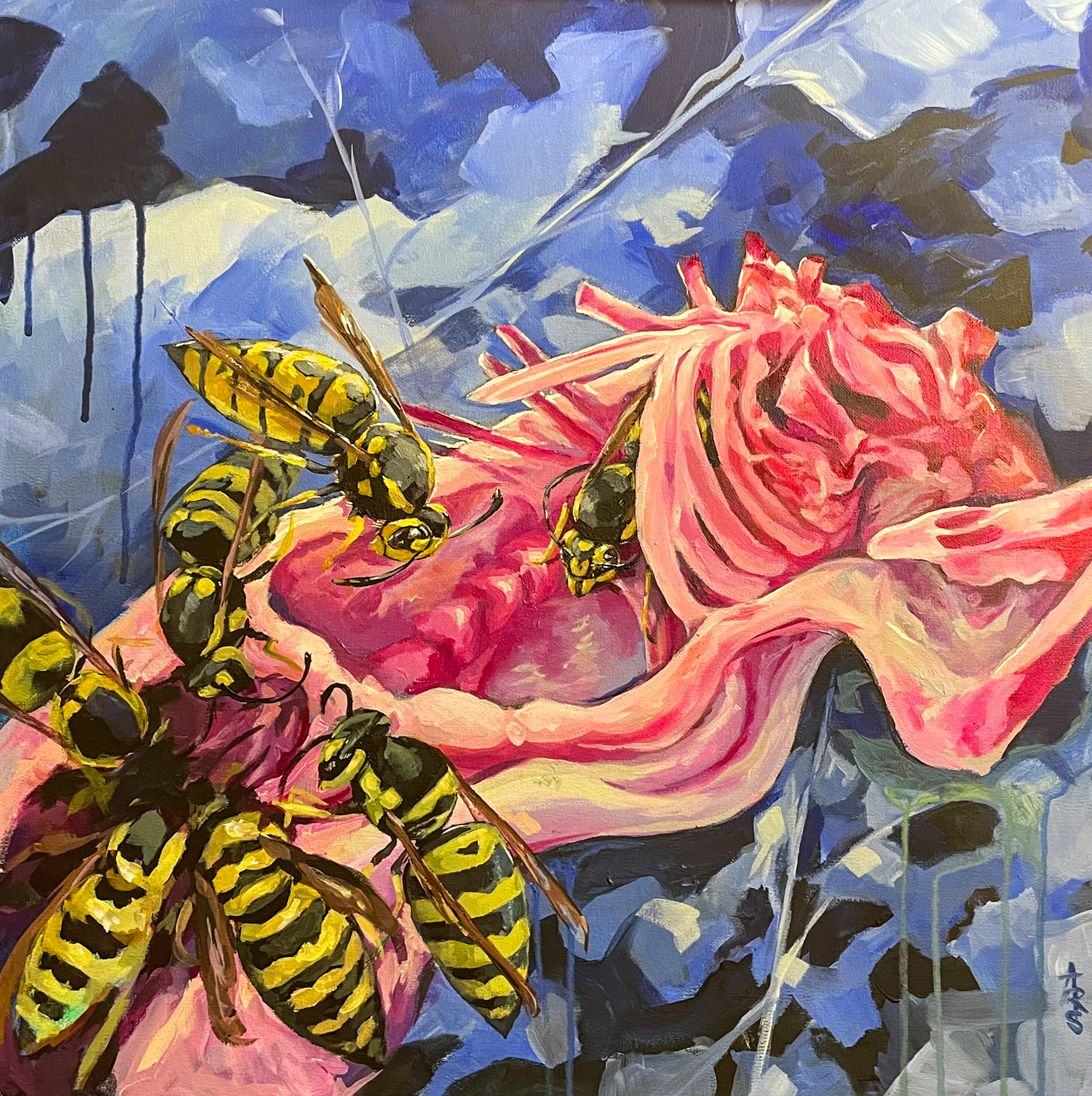Blog
No Longer a Buzzkill

By Environmental Interpretation Intern Rainey Strippelhoff for the September 13, 2023 issue of Now in Nature.
You might know them as the unwelcome guests at your picnic or a painful surprise while mowing the lawn. At only a ½ inch in length, their bright colors serve as a warning for anyone who crosses their path. Yellowjackets (Family: Vespidae) are common in late summer as their growing colonies reach their peak. With nests in old animal burrows, wall cavities, and logs, it’s easy to accidentally disturb a colony. Armed with venomous stingers and a pheromone that signals war, they're quick to send hikers running.
I’ve spent a lot of time this summer looking for hazardous nests along the trail. Yellowjackets LOVE sugar, and can be seen inside pop cans, swarming fruits, and visiting flowers. However, during my surveys, I witnessed something completely unexpected. They were hunting. Earthworms, isopods, harvestmen, and even a rodent carcass were all on the menu as protein-rich baby food for yellowjacket larvae. Amazing! With some cautious curiosity, the animal that scared me the most became fascinating.
I learned that yellowjacket adults seek out food rich in sugar and carbohydrates (like fruit, nectar... or your ice cream) only for themselves. Once a foraging yellowjacket finds a good source of protein, it’s chewed into a five-star meal for hungry larvae. The larvae tip them for a job well done by secreting a sugary substance that the adults eat. This exchange of food between adults and larvae is called trophallaxis. By August, hives can reach numbers in the hundreds.
During the peak population period, the hive will begin producing new queens and males that will leave the colony to mate. The males quickly die after mating, and the newly fertilized queens will be the only survivors over winter. Towards the end of the season, food becomes scarce as the abundance of summer dwindles in the fall. In their search for alternative food, diminished populations of yellowjackets cause chaos at picnics, restaurants, and ice cream parlors.
Until the first frost, these feisty insects can pose a hazard to your outdoor fun, but there are some things you can do to safely share your space.
1. If you’re out hiking, be sure to stay on-trail. Most nests will be among the leaf litter instead of a well-worn trail. That said, it’s good to stay vigilant this time of year since yellowjackets don’t always pick a good place for a nest.
2. If you’re having a picnic, make sure it’s only for people. Uncovered fruit, sweets, drinks, and garbage look like a buffet for hungry yellowjackets.
3. Finally, whatever you do, don’t SWAT! Instead, be cautiously curious. You’ll be surprised by what you discover!